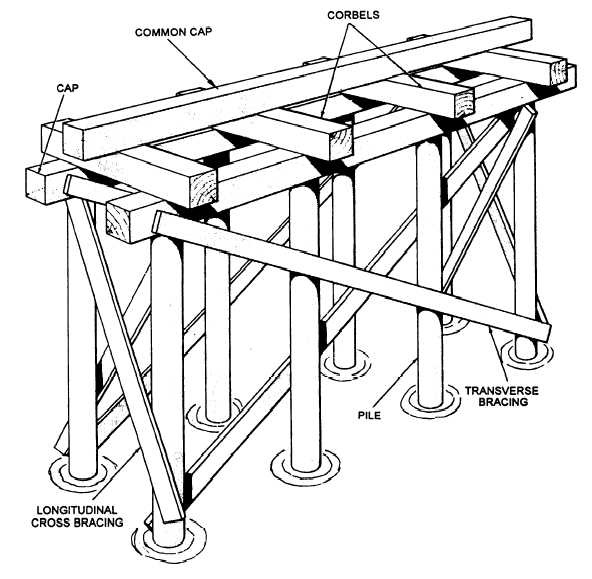Figure 1-5.—Typical pile pier.
The pile pier (fig. 1-5) is composed of two or more
pile bents. In this figure, notice the common cap. The
cap transmits the bridge load to the corbels, which in
turn, transmit the combined load to the individual bent
caps. Piers are usually provided with cross bracing that
ties the bents together and provides rigidity in the
longitudinal direction.
SUPERSTRUCTURE
The superstructure of a bridge consists of the
stringers, flooring (decking and treads), curbing, walks,
handrails, and other items that form the part of the bridge
above the substructure. Figure 1-6 is an illustration of a
superstructure.
As seen in the figure, those structural members
resting on and spanning the distance between the
intermediate supports or abutments are called stringers.
The stringers are the mainload-carrying members of the
superstructure. They receive the load from the flooring
and transmit it to the substructure. Although the figure
shows both steel and timber stringers, in practice only
one type would normally be used.
The flooring system includes the deck; the wearing
surface, or tread, that protects the deck; and the curb and
handrail system. The plank deck is the simplest to design
and construct, and it provides considerable savings in
time compared to other types of decks. Plank decking is
normally placed perpendicular to the bridge center line
(direction of traffic) for ease and speed of construction.
A better arrangement, however, is provided if the
decking is placed at about a 30- to 60-degree skew to
1-4

